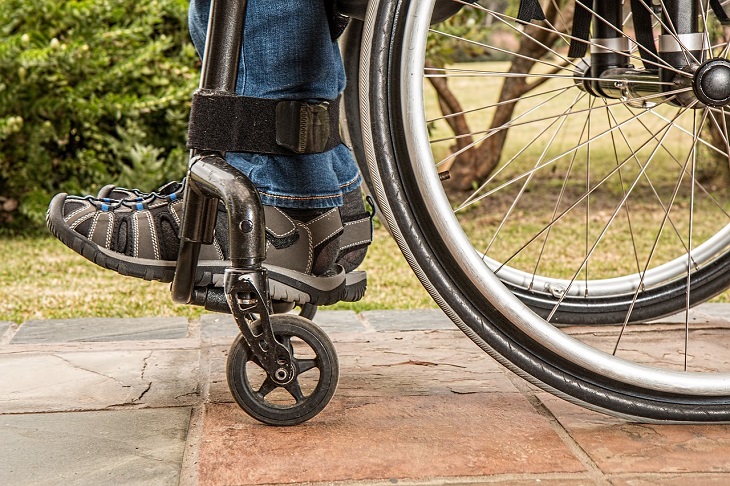The convenience of online services has revolutionized various aspects of daily life, including how individuals apply for handicapped parking permits. The traditional process required visiting municipal offices, filling out paperwork, and submitting various forms of documentation; however, the shift to online application systems has brought many advantages, including simplifying and expediting the entire procedure.
Handicap parking permits are essential for individuals with disabilities and reduced mobility, providing them with closer access to facilities and services. These permits help people with mobility challenges navigate public spaces more comfortably and safely. Having access to handicapped parking also ensures equal access to services for individuals with disabilities.
In this article, we explore the top benefits of applying for a handicap permit online, highlighting the convenience, efficiency, accessibility features, enhanced documentation, cost savings, and the broader societal impact of promoting inclusivity and equity. If you are getting started on the process, apply for handicap permit parking online with Dr. Handicap.
Enhanced Your Convenience and Accessibility
Applying for a handicap permit online streamlines the process, making it accessible anytime, anywhere. Here’s how:
Eliminates the Need to Attend Physical Visits
One of the primary benefits of online handicap permit applications is the elimination of the need for physical visits to government offices. Applicants can complete the entire process from the comfort of their homes or any location with internet access.
24/7 Availability
Online platforms for handicap permits are available 24 hours a day, 7 days a week. It allows applicants to submit their applications at their convenience, without the need to rely on traditional office hours and long waiting times.
Environmental Impact of Reduced Paperwork and Hassle
Digital applications not only streamline the paperwork involved but also reduce the hassle for both applicants and administrative staff. This efficiency translates into quicker processing times and fewer errors in documentation submission. Going paperless reduces the environmental footprint, aligning with sustainable practices.
Speedy Application Processing and Efficiency
Online handicap permit applications offer streamlined processes, guiding users efficiently through the required steps. Here’s how it can affect the process:
Streamlined Application Process
Online applications for handicap permits typically feature user-friendly interfaces that guide applicants through the necessary steps. This streamlined process ensures that all required information is collected efficiently.
Faster Approval Turnaround
Digital applications often result in faster approval turnaround times compared to traditional methods. Automated verification and processing systems expedite the review process, getting permits into the hands of applicants sooner.
Minimized Waiting Times
By reducing bureaucratic delays and paperwork handling, online applications minimize waiting times for applicants. This is particularly beneficial for individuals who require immediate access to accessible parking spaces.

Accessibility Features in Online Handicap Permit Applications
User-Friendly Interfaces
Modern online platforms for handicap permit applications are designed with accessibility in mind, featuring intuitive interfaces that cater to users with diverse needs and abilities.
Support for Accessibility Tools
These platforms often support accessibility tools such as screen readers and keyboard navigation, ensuring that individuals with visual impairments or other disabilities can navigate the application process independently.
Multilingual Options
Many online systems offer multilingual support, accommodating applicants who are more comfortable completing forms in languages other than the official language of their jurisdiction.
Record-keeping and Documentation Capabilities
These online application systems ensure thorough and accurate capture of the applicant’s information, supporting efficient processing, compliance, and transparency throughout the permit issuance and renewal processes. Here are more details about the benefits:
Digital Recordkeeping
Online applications facilitate the digital recordkeeping of permit applications and approvals. This electronic storage ensures easy retrieval of information and reduces the risk of paperwork loss or damage.
Easy Retrieval and Renewal
Applicants can easily retrieve their permit information for renewal purposes or updates. This convenience simplifies the administrative burden associated with maintaining a handicap permit.
Enhanced Security Measures
Digital platforms often incorporate security measures to protect sensitive applicant information, such as encryption and secure servers, ensuring data privacy throughout the application process.
Cost and Resource Savings
Reduced Administrative Burden
Automated online processes reduce the administrative burden on government agencies responsible for issuing handicap permits, allowing them to allocate resources more efficiently.
Environmental Impact
By minimizing the use of paper and physical mailings, online handicap permit applications contribute to environmental conservation efforts, reducing paper waste and carbon footprints associated with traditional paperwork.
Potential Cost Savings for Applicants
Online application systems can potentially reduce costs for applicants by eliminating the need for transportation to and from government offices and reducing printing and postage expenses.
Promoting Inclusivity and Equity
Increased Accessibility for All
Online application options enhance accessibility for individuals with disabilities by providing a more convenient and user-friendly method of obtaining handicap permits from the comfort of their own homes.
Addressing Mobility Challenges
By ensuring easier access to accessible parking spaces, online permit applications address mobility challenges faced by individuals with disabilities, promoting independence and mobility.
Equal Access to Services
Facilitating online applications ensures that all individuals, regardless of physical location or mobility limitations, have equal access to the necessary permits and services.
Challenges and Considerations
The top benefits of applying for a handicap permit online are convenience and accessibility to disabled individuals. However, there are some challenges to consider.
Digital Literacy and Access Barriers
While online applications offer numerous benefits, challenges such as digital literacy and access to technology may pose barriers for some applicants, particularly older adults or those with limited internet access.
Ensuring Data Security and Privacy
Maintaining robust data security measures is essential to protect sensitive applicant information from unauthorized access or breaches, ensuring trust in online application systems.
Addressing Potential Fraud Concerns
Online systems must implement measures to verify applicant identity and prevent fraudulent applications, safeguarding the integrity of the handicap permit issuance process.
Let’s Recap the Top Benefits
The shift to online applications for handicap permits offers significant benefits, including enhanced convenience, efficiency, accessibility, and cost savings for both applicants and administrative bodies. Encouraging more widespread adoption of online application systems can further improve accessibility and streamline processes for individuals with disabilities seeking handicap permits.
Looking ahead, advancements in technology and user experience are expected to continue enhancing the accessibility and effectiveness of online services for individuals with disabilities, promoting greater inclusivity in society.
In conclusion, the transition to online application processes for handicap permits marks a positive step towards improving accessibility, efficiency, and inclusivity in public services. By leveraging technology, governments can better meet the needs of individuals with disabilities while streamlining administrative processes and reducing environmental impact.
Featured image by Glenn Carstens-Peters on Unsplash.





